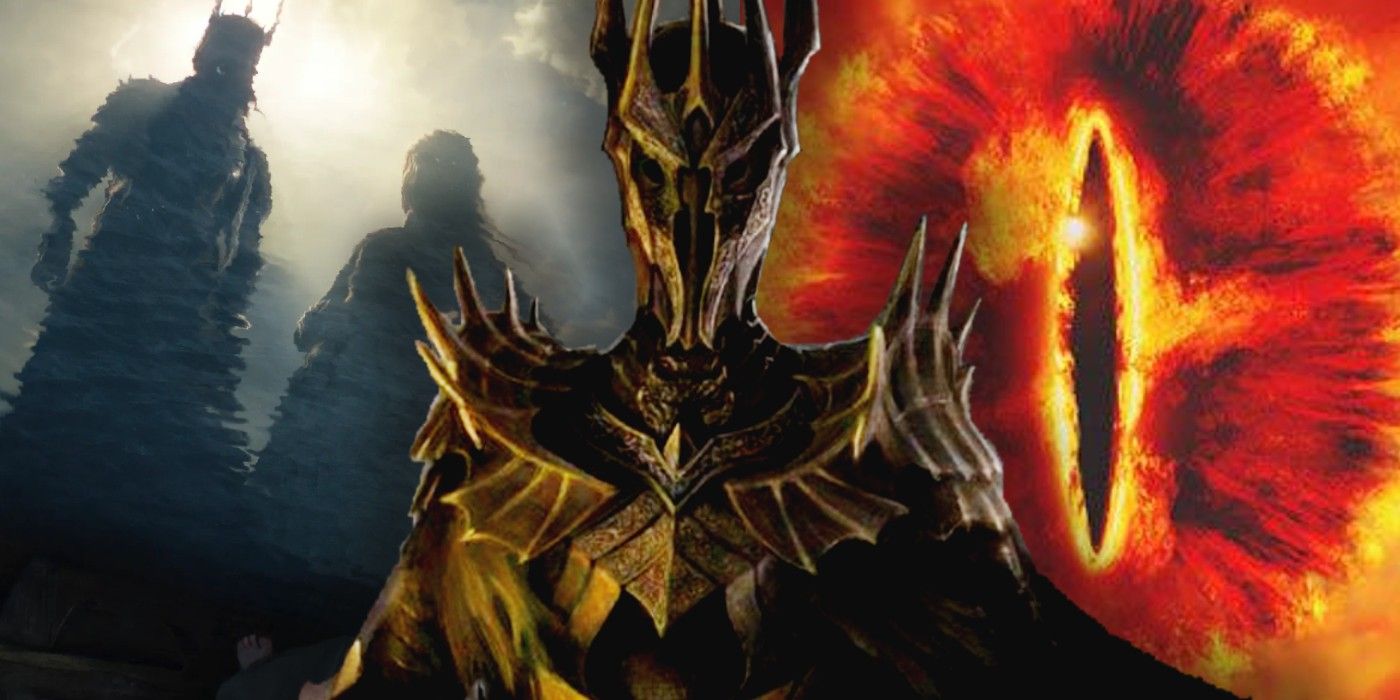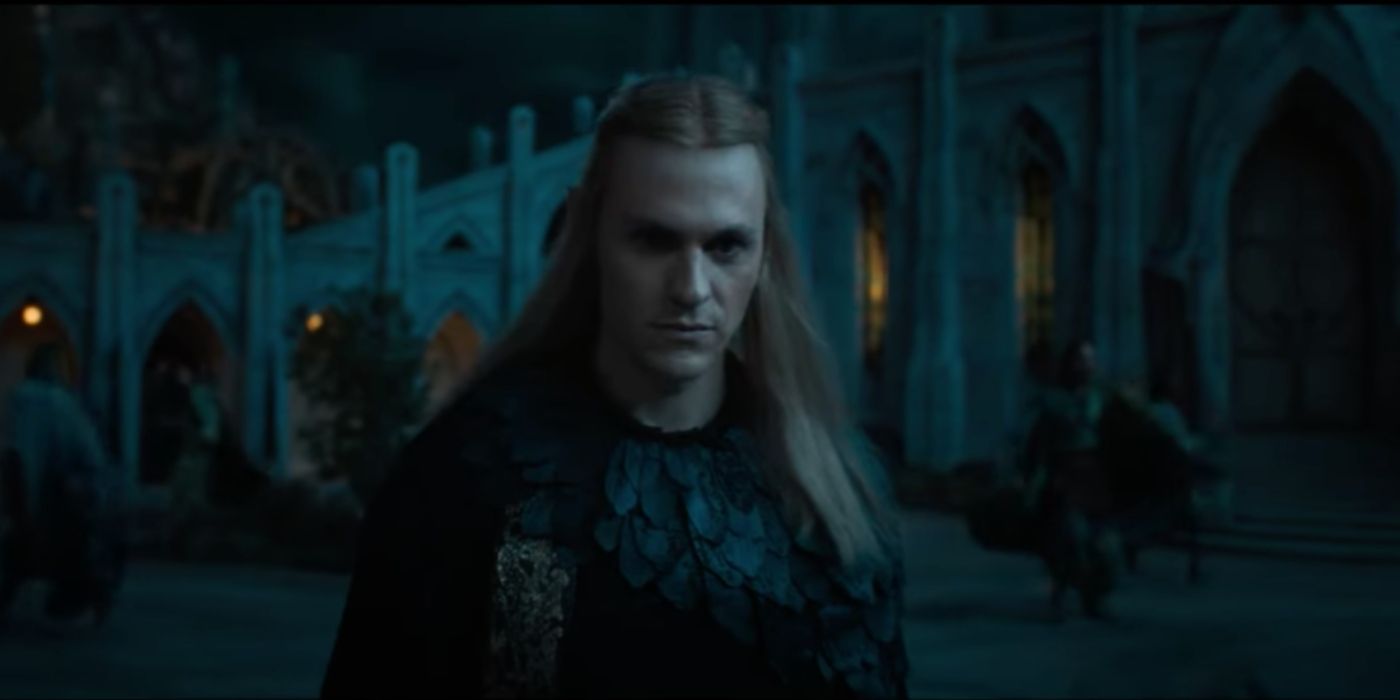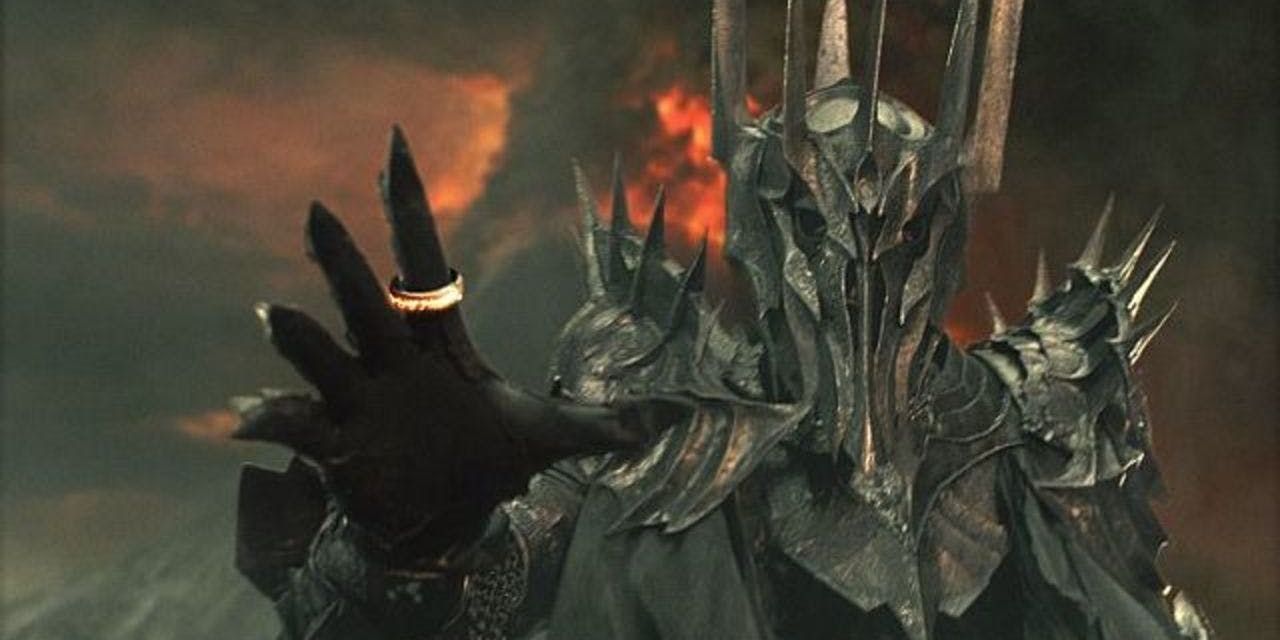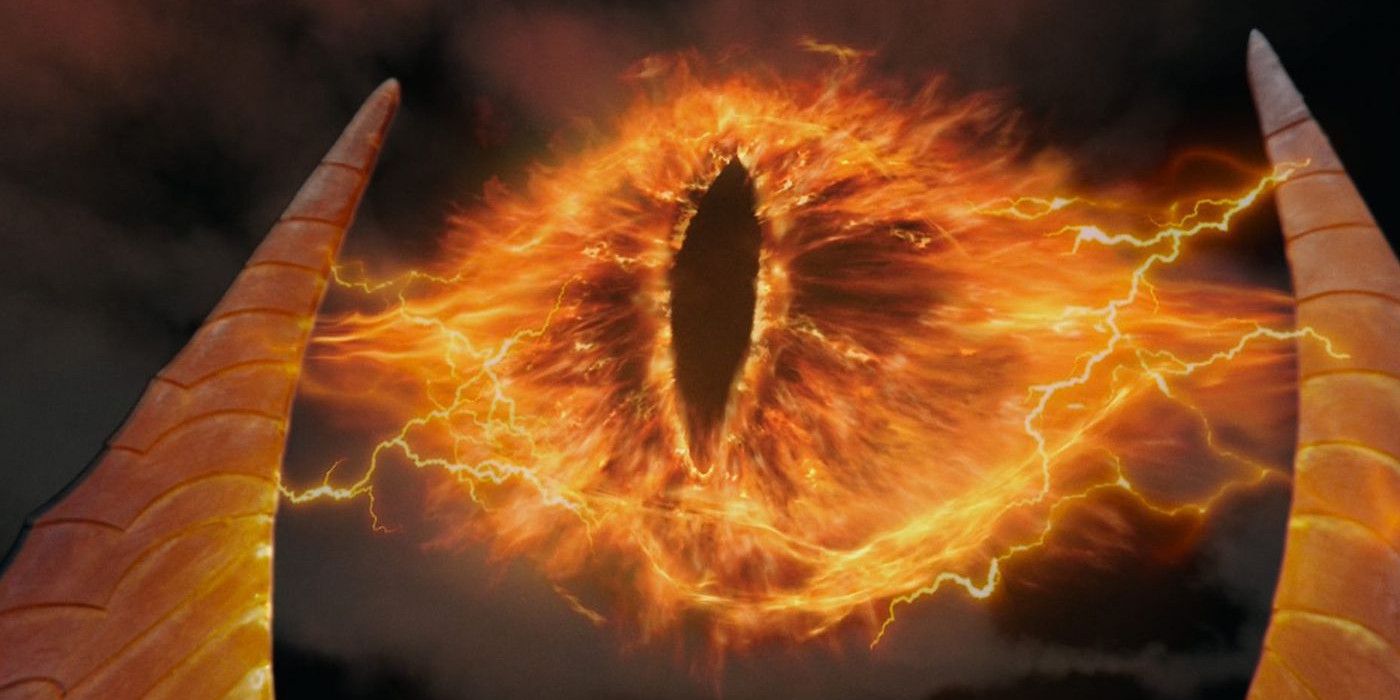
In Peter Jackson’s The Lord of the Rings film trilogy, the Dark Lord Sauron was best known for forging cursed rings and annihilating his enemies with a massive mace. But in J. R. R. Tolkien’s novels, Sauron had a wide array of magical abilities that made him threatening both on and off the battlefield. One of his favorite and most useful powers was shapeshifting. Sauron was a type of divine spirit called a Maia, and as such, his true form was invisible and intangible. However, he could create a physical body to interact with the world, and he had full control over its appearance. The first season of Prime Video’s The Lord of the Rings: The Rings of Power showcased the effectiveness of his shapeshifting when he assumed the forms of Halbrand and Finrod in hopes of tricking Galadriel into helping him. The trailer for the second season showed Sauron in an Elven form that took inspiration from Annatar, his fair guise from Tolkien’s writing.
As well as allowing him to more easily manipulate others, Sauron’s shapeshifting gave him physical advantages. In the section “Of Beren and Lúthien” from The Silmarillion, he used several animal forms during his fight with the wolfhound Huan. He first became a werewolf, “the mightiest that had yet walked the world,” to attack Huan with his teeth and claws. He then turned into a serpent in an attempt to wriggle away from Huan, though this failed. Later, Sauron took the form of a vampire — which, in Tolkien’s lore, was a large, batlike monster — to fly away. The ability to shapeshift was important to Sauron in the First and Second Ages of Middle-earth, so why did he never use it during the events of The Lord of the Rings in the Third Age?
Isildur Permanently Wounded Sauron in The Lord of the Rings
Sauron’s Main Forms in J. R. R. Tolkien’s Novels
Description
Year First Used
Mairon
Original form
Unknown
Annatar
Fair form used to appeal to Elves and Men
S.A. 1200
Dark Lord
Monstrous form used to fight and inspire fear
S.A. 3320
Contrary to what Jackson’s film adaptations implied, Sauron had a physical body throughout The Lord of the Rings. After Sauron’s defeat in the War of the Last Alliance, he spent thousands of years recreating his physical form in Dol Guldur. As the section “Of the Rings of Power and the Third Age” from The Silmarillion stated, “Slowly he grew and took shape there again; in a dark hill he made his dwelling and wrought there his sorcery.” Most characters from The Lord of the Rings were fortunate enough to never see Sauron in person, but there was an exception: Gollum. While Gollum was trapped in Mordor, Sauron tortured him for information about the One Ring, so he saw this new body with his own eyes.
Gollum did not describe much about the Dark Lord’s appearance, but in the chapter “The Black Gate is Closed” from The Two Towers, he told Frodo that Sauron had “only four [fingers] on the Black Hand.” The missing finger was that which Isildur had cut off so that he could claim the One Ring in the War of the Last Alliance. Even when Sauron reformed his body, he was unable to regrow this finger because he had become permanently stuck in a single form. Sauron’s loss of power began at an earlier point in the Second Age. After the Downfall of Númenor — which Sauron caused by corrupting the Númenóreans — he lost the ability to transform into Annatar or any other similarly appealing form. In the section “Akallabêth” from The Silmarillion, Tolkien wrote, “He was robbed now of that shape in which he had wrought so great an evil so that he could never again appear fair to the eyes of Men.”
The One Ring Contained Most of Sauron’s Power








Tolkien did not use the name “Annatar” in The Lord of the Rings, so The Rings of Power series might be unable to directly adapt it.
However, Sauron had not yet lost his power to shapeshift entirely. After escaping Númenor, “he wrought himself a new guise, an image of malice and hatred made visible,” which he used throughout the rest of the Second Age. Sauron’s inability to assume his fair guise was an outer reflection of his inner evil. By dooming an entire island kingdom, his evil became too great to conceal. When Isildur cut the One Ring from his finger, Sauron completely lost his shapeshifting powers. He was still able to create a new body, but he could not control its appearance; it looked the same as his previous form, including the missing finger. It also took far longer for him to do so than it had in the past.
Part of the reason for this is that Sauron was in a severely weakened state after the War of the Last Alliance. Sauron had poured most of his power into the One Ring, so once Isildur took it from him, it became extremely difficult to reform a single body, let alone shift between multiple at will. This was why he never left the tower of Barad-dûr during the War of the Ring even though he likely could have turned the tide of various battles by fighting alongside his forces. He did not want to risk any physical harm to his new body because it would take him thousands of years to heal, during which time his opponents might undo all that he had accomplished. But there was another, deeper reason that Sauron was unable to shapeshift in The Lord of the Rings.
Sauron’s Loss of Power Was a Commentary on Evil

Though Sauron lost his body during the Downfall of Númenor, he was somehow able to retain the One Ring and carry it to Middle-earth.
Something similar happened to Sauron’s master, Morgoth, in the section “Of the Darkening of Valinor” from The Silmarillion. He was a Vala, a type of divine spirit even more powerful than a Maia, so he too could take any form he wished, though he did not make use of this nearly as often as Sauron. When he set out to steal the Silmarils and destroy the Two Trees of Valinor, he became “a dark Lord, tall and terrible,” and “in that form he remained ever after.” Like Sauron’s manipulation of Númenor, this act was too vile for Morgoth to hide. Later, during a fight with High King Fingolfin and the Great Eagle Thorondir, Morgoth sustained permanent injuries, including a limp. He had poured his power into various evil creations, like the Orcs, so he also lacked some of his original strength.
Tolkien further described this phenomenon in The Nature of Middle-earth. He wrote,
So it was also with even some of [Morgoth’s] greatest servants, as in these later days we see: they became wedded to the forms of their evil deeds, and if these bodies were taken from them or destroyed, they were nullified, until they had rebuilt a semblance of their former habitations, with which they could continue the evil courses in which they had become fixed.
This implied that a psychological limitation prevented Sauron from shapeshifting in The Lord of the Rings. His defeat in the War of the Last Alliance weighed too heavily on his mind, and he could not move on from his failure. His missing finger was a permanent reminder of his most devastating defeat. Both Morgoth and Sauron suffered and became weaker as a direct result of their actions, which was a cautionary tale. In real life, doing evil does not cause physical transformations, but it can leave permanent mental scars.





